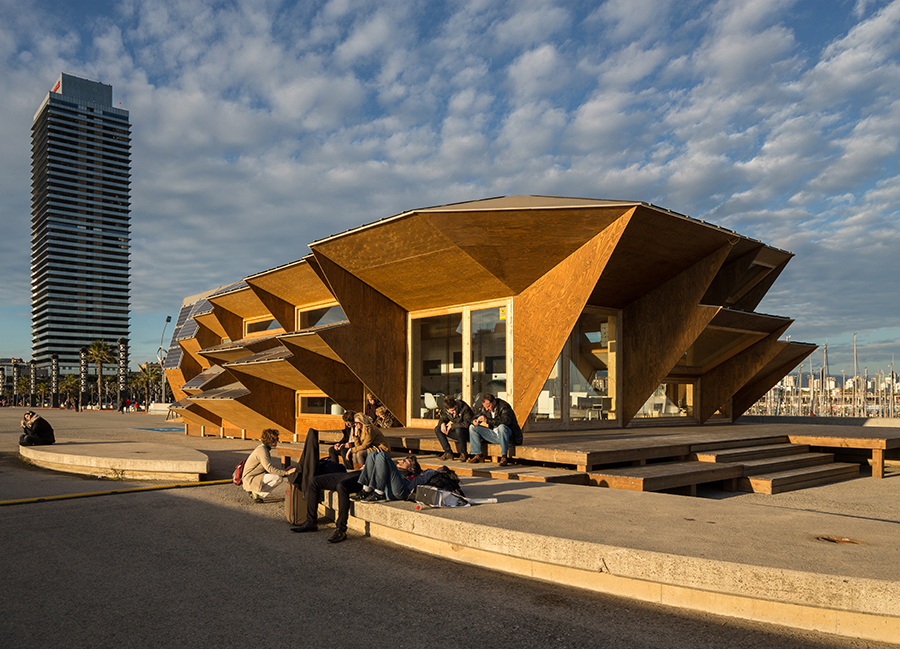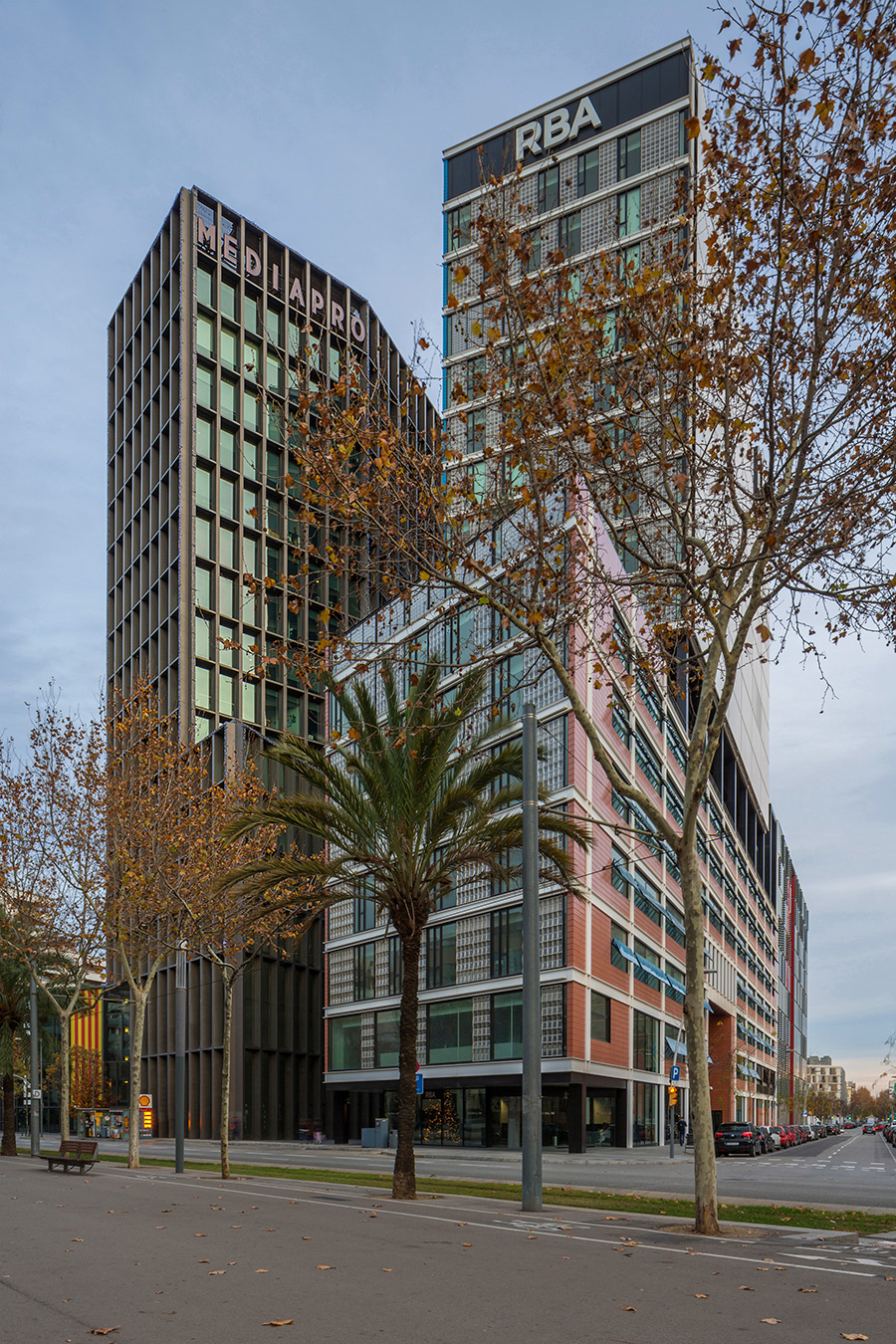The curved lines of the city.
CAN FRAMIS MUSEUM
BAAS Jordi Badia
2008


GERMAN PAVILION
Ludwig Mies van der Rohe
1929; 1986


ENDESA ENERGY PAVILION
Rodrigo Rubio IAAC
2011


THE BOTANIC GARDEN
Carles Ferrarter
1999


THE JUSTICE CITY
David Chipperfield Architects, b720 Architects
2008


HINES OFFICES
Dominique Perrault
2010


MEDIACOMPLEX
Carlos Ferrarter
2008




This photography project consist of two parts. The first one is about the straight lines of the city, the second one is about the curves lines of the city.
http://issuu.com/shevchenko_ann/docs/barcelona_issue
Barcelona is considered as the best example of reconstruction of a city for the last 30 years. For these years Barcelona turned from a fallen into decay industrial city into the center of tourism and creative industry, into a place with very high standard of living.
Creation of the favorable environment of life was a main goal of the program of reconstruction of Barcelona. City public spaces and high quality of architecture to which the special attention was paid were called a key to quality of life and became the feature of “Barcelonian approach”. A lot of social housing, which differs high architectural level is under construction and is evenly distributed around the city. Some “new central zones” were created, which allowed lowering pressure on the historical center. Authorities plan that in each district of the city there has to be “an esthetic magnet” — a bright architectural construction or public space with a sculpture. Convenient access to the cultural centers and vacation spots was organized at the expense of the debugged public transport.
The old dispute of “straight line” and “curve”, geometrical correctness and organic irregularity of a form passes through all history of architecture. These are two fundamentally different understanding of plasticity of architecture, which closely adjoin and continuously argue with each other. Examples of that and other approach are constantly present nearby, but every time, superiority of one of them is notable. So, in rather short, but a rough era of baroque, apparently, all architecture was captured by violence of the curvilinear forms, seeking to destroy any reminiscence of a straight line. However, the functionalism, which has arisen in the twentieth century, on the contrary, is a complete denial of unnecessary decorations – a simple geometry of space, right angles without broken and curved lines.
It’s really important that the amazing projects that look absolutely fantastic in sketches and 3D models have all chances to be embodied in real life in Barcelona. Since the XIX century and Gaudi, still the objects of my attention, and , I believe, never ending.

